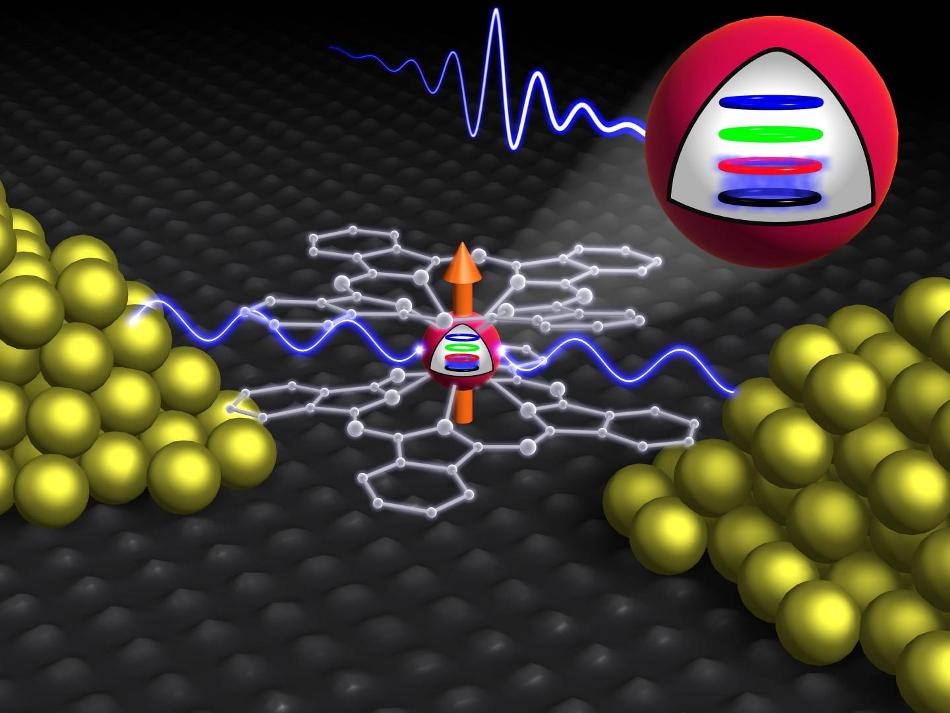Nov 15 2017
Scrapbooks or social networks are considered to be collections of mostly unsorted data. The search for single elements in extremely large data volumes, that is, for the needle in the data haystack, is extremely complex for classical computers.
Scientists of Karlsruhe Institute of Technology (KIT) have presently quantum mechanically implemented and successfully implemented Glover’s algorithm, a process for the rapid finding of a search element in unsorted databases. Their results have been reported in the Physical Review Letters. DOI: 10.1103/PhysRevLett.119.187702
 Upon execution of Grover’s quantum algorithm, the terbium single-molecule transistor reads out unsorted databases. (Graphics: KIT/Institut Néel)
Upon execution of Grover’s quantum algorithm, the terbium single-molecule transistor reads out unsorted databases. (Graphics: KIT/Institut Néel)
However, a universal quantum computer still has a vision. Exceptional quantum systems that promise to solve specific tasks more rapidly than a classical computer, however, are already playing a vital role in science. In order to reliably find a specific element in unsorted data, a standard computer has to run via all search elements successively in the most hostile case. Search is quadratically accelerated by a quantum system with an implemented Grover’s search algorithm.
Research teams led by Professors Wolfgang Wernsdorfer and Mario Ruben of KIT, along with scientists of the Institut Néel (Grenoble), have succeeded in achieving this: The scientists used Grover’s algorithm to a molecular magnet and, thus, developed a quantum system, whose task is to rapidly find search elements in unsorted data.
In their recent research project, they established feasibility of a rapid search for a small database of four elements.
But this method can be implemented in any quantum system with many, non-equidistant energy levels, which opens up the way towards a universal quantum search algorithm,
Professor Mario Ruben, KIT
The scientists applied Grover’s algorithm in a molecular magnet that was subjected to superposition with microwaves that are specifically designed. Superposition is a quantum effect, in which a particle accepts varied states simultaneously. A single-molecule transistor read out the search results upon execution of the quantum operations. This process illustrates an animation.
Wolfgang Wernsdorfer, Professor of KIT’s Physikalisches Institut and Institute of Nanotechnology (INT), stresses that the quantum states were manipulated at extremeyl low temperatures by exclusively using electric fields. “That is why we hope that this technology can be integrated into current electronic devices,” Wernsdorfer adds.
The tailored molecule transistor was synthesized by Mario Ruben’s team at INT and KIT’s Institute for Inorganic Chemistry. In its center, a terbium atom with a distinct magnetic moment, a spin, is placed. The terbium is surrounded by organic molecules responsible for shielding it against external impacts.
Click here for a video showing the process: www.sek.kit.edu/downloads/Grover-quantum_algorithm_trail_short.mp4